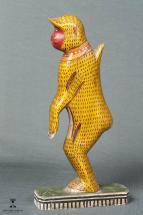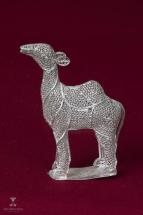Site Name:
Date: 1800-1899
Subject: Deer. Tarakasi is a type of silver filigree work from Cuttack. Temples across Odisha possess silver filigree works offered by devotees as votives and gifts on festive occasions. Decorative artifacts such as animals carved in filigree are preferred mementoes and souvenirs for tourists.



























